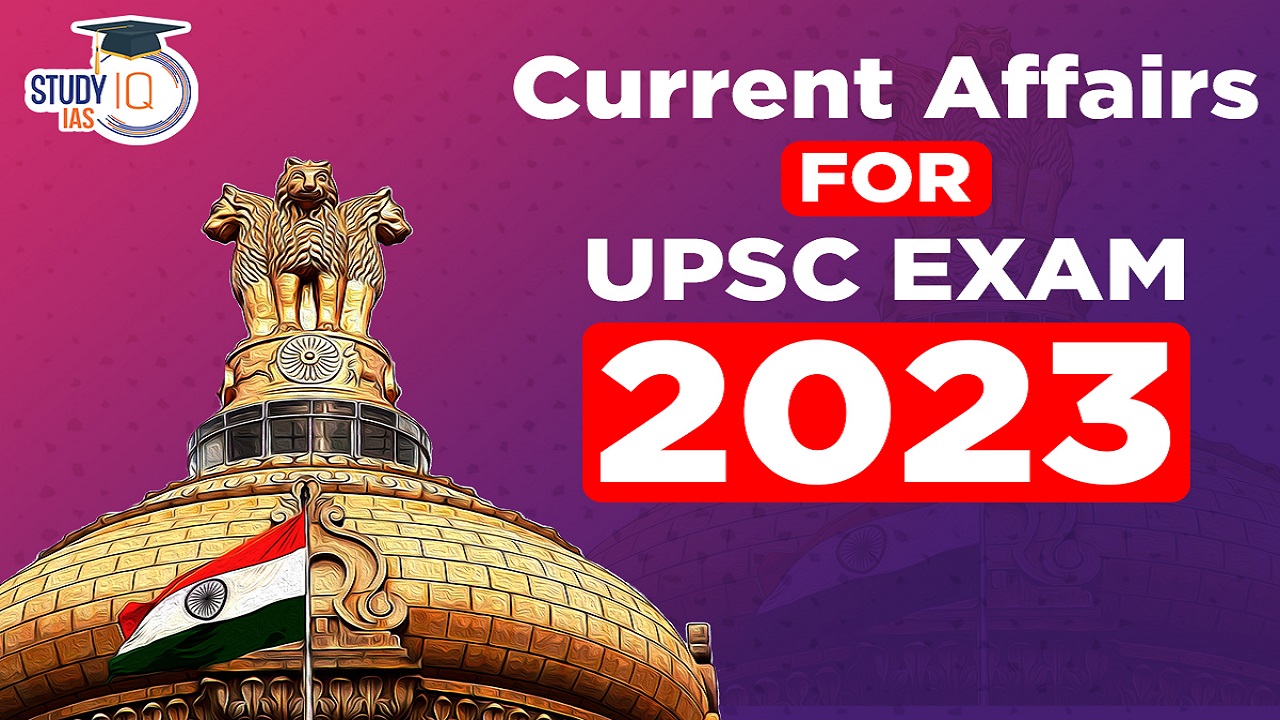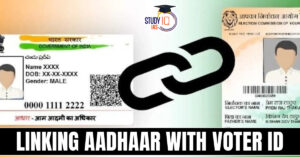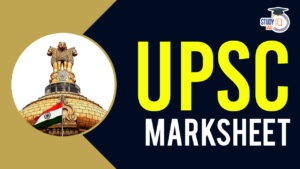Current Affairs 4th September 2023 for UPSC Prelims Exam
Competition Commission of India (CCI)
Context: The Competition Commission of India (CCI) recently approved the merger of Vistara with Air India (AI) and also allowed Singapore Airlines to acquire 25.1% stake in the erstwhile national carrier.
About Competition Commission of India (CCI)
- Definition: The Competition Commission of India (CCI) is a statutory body.
- It was established in 2009 by GoI under the Competition Act, 2002 for the administration, implementation, and enforcement of the Act.
- CCI is a quasi-judicial body.
- Objectives:
- Eliminate practices having adverse effect on competition
- Promote and sustain competition
- Protect the interests of consumers
- Ensure freedom of trade in the markets of India
- Proactive engagement with all stakeholders, including consumers, industry, government and international jurisdictions
- Being a knowledge intensive organization with high competence level
- Professionalism, transparency, resolve and wisdom in enforcement.
- Composition: CCI consists of a Chairperson and 6 Members appointed by the Central Government.
- Significance: CCI has adjudicated more than 1,200 antitrust cases that were highly complex, traversed till the apex court and stood the judicial scrutiny, and in the process, developed world-class jurisprudence.
- It has also reviewed more than 900 mergers and acquisitions till date, cleared most of them, within a record average time of 30 days.
- CCI has also come up with several innovations like the ‘green channel’ provision for automated approval on combinations and cleared more than 50 of such transactions.
- CCI has conducted several market studies helping dynamics of market.
- CCI has slapped hefty fines on tech giant Google, and hospitality firms like OYO and MakeMyTrip.
- Challenges:
- Toothless Regulator: CCI has been called a ‘Toothless regulator’ by critics as most of the orders of the CCI are under appeal before the National Company Law Appellate Tribunal (NCLAT) or under challenge in the high courts or the Supreme Court.
- Threat from Cartelization: The Union Government is pushing infrastructure growth to scale up demand, hence there is a possibility of threat from cartelisation.
- Regulatory Overlap: In spheres such as telecom, internet and big-technology, CCI’s functions also overlap with other regulatory bodies such as the Telecom Regulatory Authority of India (TRAI).
- Lack of Technical Staff: CCI will require staff with specialized knowledge in technology as well as an understanding of modern industrial economics.
- Lack of Digitization: There is lack of new market definition for digital technologies.
- With the advent of Web 3.0, AI, IoT, Blockchain and other technological developments, and emergence of issues like data protection and privacy, search bias, platform neutrality, deep discounting, hostile takeovers, confidentiality, etc, the need for a robust competition law, geared to meet the needs of present day techno-legal world becomes vital.
Current Affairs 2nd September 2023 for UPSC Prelims Exam
Dementia
Context: The Karnataka State Health Department in association with NIMHANS and Dementia India Alliance, is all set to launch a ‘Karnataka Dementia Action Plan’.
About Dementia
- Definition: Dementia is the loss of cognitive functioning — thinking, remembering, and reasoning — to such an extent that it interferes with a person’s daily life and activities.
- Dementia affects millions of people and is more common as people grow older (about one-third of all people age 85 or older may have some form of dementia) but it is not a normal part of aging.

- Causes: Dementia is caused by damage to or loss of nerve cells and their connections in the brain.
- The symptoms depend on the area of the brain that’s damaged.
- Dementia can affect people differently.
- Symptoms:
- Experiencing memory loss, poor judgment, and confusion
- Difficulty speaking, understanding and expressing thoughts, or reading and writing
- Wandering and getting lost in a familiar neighbourhood
- Trouble handling money responsibly
- Repeating questions
- Using unusual words to refer to familiar objects
- Risk Factors: Many factors can eventually contribute to dementia.
- The risk factors include smoking, excessive alcohol consumption, physical inactivity, infrequent social contact, head injuries, and conditions including diabetes, hearing loss, depression, obesity, and hypertension.
- Types: Dementias that are progressive get worse over time. Types of dementias that worsen and aren’t reversible include:
- Alzheimer’s Disease: This is the most common cause of dementia.
- People with Alzheimer’s disease have plaques and tangles in their brains.
- These clumps damage healthy brain cells and the fibers connecting them.
- Vascular Dementia: This type of dementia is caused by damage to the vessels that supply blood to the brain.
- Blood vessel problems can cause stroke or affect the brain in other ways, such as by damaging the fibers in the white matter of the brain.
- Lewy body Dementia: Lewy bodies are balloon like clumps of protein.
- They have been found in the brains of people with Lewy body dementia.
- Common symptoms include acting out dreams in sleep and seeing things that aren’t there, known as visual hallucinations.
- Frontotemporal Dementia: This is a group of diseases characterized by the breakdown of nerve cells and their connections in the frontal and temporal lobes of the brain. These areas are associated with personality, behavior and language.
- Mixed Dementia: People with mixed dementia can have Alzheimer’s disease, vascular dementia and Lewy body dementia.
- Alzheimer’s Disease: This is the most common cause of dementia.
- Treatment: Most types of dementia can’t be cured, but there are ways to manage symptoms through medicines like donepezil (Aricept, Adlarity), rivastigmine (Exelon) and galantamine (Razadyne ER) and Memantine.
Dementia in India:
- Prevalence rate of 7.4% among those aged 60 years and above, translating to nearly 9 lakh Indians currently living with dementia.
- From an estimated 88 lakh in 2016, the prevalence of dementia is projected to increase to 1.7 crore by 2036.
- A National Dementia Action Plan is yet to be formulated in India.
- The repercussions of dementia extend beyond individual health, straining the healthcare system, incurring substantial costs, and increasing mortality rates.
- But given the complexities of healthcare priorities in India, formulating such a plan may require time.
- Advocating for State-level policies on dementia is a practical approach to address the immediate challenges of Dementia in India.
- In Karnataka, the prevalence of this neurodegenerative brain disease is estimated to be around 5%, affecting approximately 3.5 lakh individuals.
- Karnataka has initiated various programmes and services for dementia through the District Mental Health Program, Karnataka Brain Health Initiative and Non-Communicable Disease Control Programme.
- Karnataka State Dementia Action Plan which is under progress, will align with WHO’s global action plan, positioning Karnataka as a pioneer in India to formulate a comprehensive action plan for dementia.
DIKSHA Platform
Context: The National e-Governance Division (NeGD) of the Ministry of Electronics and Information Technology (MeitY) is set to integrate Personalised Adaptive Learning (PAL) into its existing Digital Infrastructure for Knowledge Sharing (DIKSHA) platform.
About Digital Infrastructure for Knowledge Sharing (DIKSHA) Platform
- Definition:
- NEP 2020 has clearly stated that a national repository of high-quality resources on foundational literacy and numeracy will be made available on the Digital Infrastructure for Knowledge Sharing (DIKSHA).
- DIKSHA, which comes under the Ministry of Education, provides e-content for schools via an online portal and a mobile application.
- It also has embedded assistive technologies for learners with visual or hearing impairments.
- Objective:
- To orient in-service & pre-service teachers, teacher educators, students, parents and other stakeholders of school education on the know-how to access and;
- Use resources on DIKSHA platform to enhance the process of teaching, learning and assessment.
- Features:
- DIKSHA features digitised NCERT textbooks used national and State Boards.
- DIKSHA hosts 2.43 lakh contributions by 11,624 academicians by way of teaching videos, explainers, and practice questions.
- However, DIKSHA is a static content repository.
- It is built on open source technology that is made in India and for India, incorporating internet scale technologies and allowing for a variety of use-cases and solutions for teaching and learning.
- Through innovative state programmes, DIKSHA enables all states/UTs to enable learning at home, thereby elevating the use of technology for the benefit of teachers and learners across the country.
What is Personalised Adaptive Learning (PAL)?
- The PAL is a software-based approach which will allow each student to have an individualised learning experience over the course of the curriculum based on their unique needs and abilities.
- The NCERT has sought the MeitY’s expertise in facilitating the PAL’s integration into DIKSHA.
- For this, content from across subjects will have to be categorised and different chunks will have to be tagged. New content may also have to be created.
- For instance, if a student of Class 9 is learning the Pythagoras theorem and makes a calculation mistake, the AI learning system flags it and loops the student back to a basic video of how to make the calculation.
- With nearly 35 lakh students dropping out in Class 10 and ineligible to qualify for Class 11 every year, the Education Ministry wants to adopt digital learning with a focus on improving learning outcomes and school retention.
- In some States, private players are already administering the PAL, which works on AI or Artificial Intelligence, but budget constraints have been an obstacle.
- Andhra Pradesh has signed contracts with Reliance Jio Platform’s start-up Embibe, ConveGenius, and Mindspark for training teachers to use IT applications in the classroom, provide analytics for remedial learning, and help students improve their conceptual understanding.
- In Assam, the PAL has been adapted in 200 schools from Classes 6 to 10.
- However, the process of making PAL is time consuming and it will still take three to four years to develop the tech and roll it out for use.
National Food Security Act (NFSA)
Context: Cereal inflation in India based on the official consumer price index has been in double digits since September 2022.
- But for Indians covered under the National Food Security Act (NFSA), it has not been a concern until recently.
More on News
- All NFSA beneficiaries, before January 2023, were getting 10 kg of rice or wheat per month practically free of cost which more or less met their entire requirement.
- But from the new calendar year, the NFSA entitlement was restored to the original 5 kg/person/month level prevailing prior to April 2020.
- The same ration cardholders, now having to purchase rice and wheat from the open market, are feeling the pinch of cereal inflation, which has nearly doubled from 6.9% to over 13% between July 2022 and July 2023.
What is National Food Security Act (NFSA) 2013?
- Definition: Enacted by the GoI in 2013, this Act aims to provide food and nutritional security by ensuring access to an adequate quantity of quality food at affordable prices.
- The issue of ‘food security’ at the household is continuously being addressed by the Government since long, through the Public Distribution System and the Targeted Public Distribution System.
- But this Act marks a paradigm shift in the approach to food security from welfare to rights based approach.
- Constitutional Mandate: Though the Indian Constitution does not have any explicit provision regarding right to food, the fundamental right to life enshrined in Article 21 of the Constitution may be interpreted to include right to live with human dignity, which may include the right to food and other basic necessities.
- Implementation: The Act is being implemented in all the States/UTs, and on an all India basis.
- While the Centre is responsible for allocation of required foodgrains to States/UTs, the States/UTs are responsible for effective implementation of the Act.
- The work of identification of eligible households is to be done by States/UTs.
- Categories: Identification of beneficiaries under the NFSA is under two categories-
- Households covered under Antyodaya Anna Yojana (AAY),
- Priority Households (PHH) within the coverage determined for the State/UT.
- Food Entitlement: While AAY households, which constitute poorest of the poor are entitled to 35 kg of foodgrains per family per month, priority households are entitled to 5 kg per person per month.
- Prices: Foodgrains under NFSA are to be made available at subsidized prices of Rs. 3/2/1 per kg for rice, wheat and coarse grains respectively.
- Coverage:
- Population: The Act legally entitles upto 75% of the rural population and 50% of the urban population to receive subsidized foodgrains under Targeted Public Distribution System.
- Pregnant Women and Children: Under life-cycle approach, special provisions have been made for pregnant women and lactating mothers and children in the age group of 6 months to 14 years, by entitling them to receive nutritious meal free of cost through a widespread network of Integrated Child Development Services (ICDS) centres, called Anganwadi Centres.
- Pregnant women and lactating mothers are further entitled to receive cash maternity benefit of not less than Rs. 6,000.
- Women Empowerment: As a step towards women empowerment, the eldest woman of the household of age 18 years or above is mandated to be the head of the household for the purpose of issuing of ration cards under the Act.


 Daily Quiz 25 April 2025
Daily Quiz 25 April 2025
 Linking Aadhaar with Voter ID Endangers ...
Linking Aadhaar with Voter ID Endangers ...
 UPSC Marks 2025 Out – Download UPSC Ma...
UPSC Marks 2025 Out – Download UPSC Ma...





















